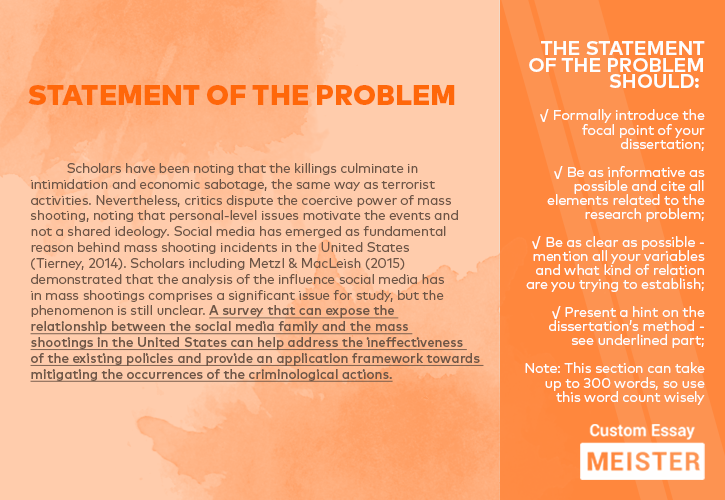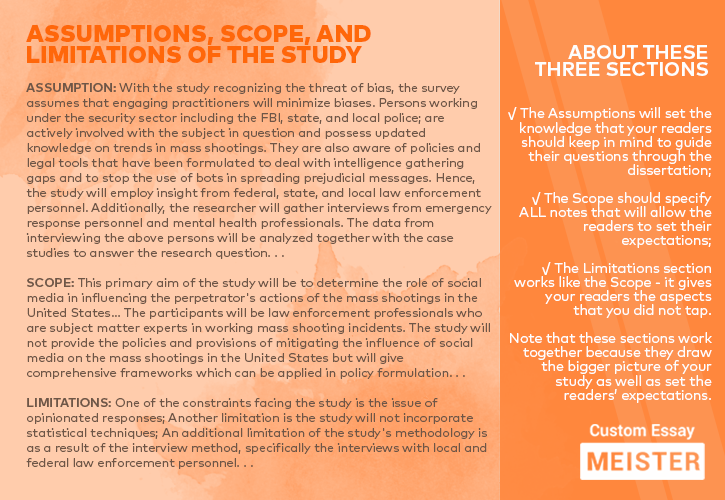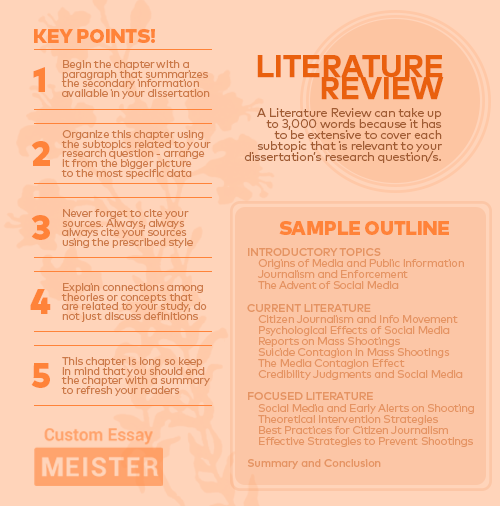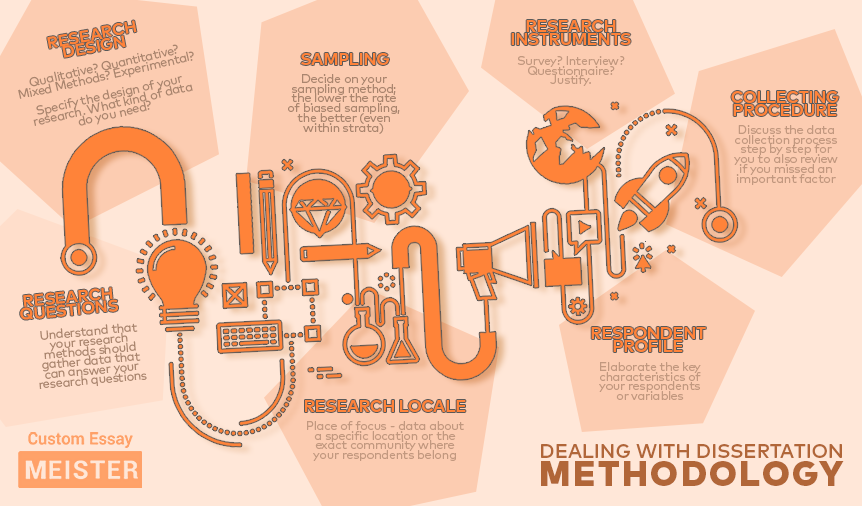Standard Dissertation Structure
Structuring a dissertation is overwhelming. Methodology, research rationale, research questions, research objectives, literature reviews, conceptual framework – all these sections wrestle each other up in your head, strengthening the aura of difficulty of undergraduate dissertation writing that is already confusing you. However, the truth is structuring a dissertation is not that confusing if you know exactly which goes first and what you need to discuss in each section. Here is a complete guide in formatting and structuring your dissertation. Get a hold of your favorite drink and your dissertation proposal , because the approved dissertation proposal is your initial guide in structuring your dissertation. Also it is best to read this entire guide in full before you commence writing.
Note: All given samples are excerpts only. A dissertation is a long document by default.
The Preliminary Pages
The preliminary pages of a dissertation are the pages preceding the actual manuscript of your study. In general, these pages include, but are not limited to, the title page, the abstract, the acknowledgment, and table of contents, among other pages which a university may require the student to include. The preliminary pages are noted with lowercase Roman numerals in the table of contents (i, ii, iii, and so on), however, these page numbers do not have to be present in each printed page.
i. Title Page
Your dissertation’s title page depends on the required academic style. The most common academic style used in thesis and dissertation writing is APA Academic Style , but some universities have their own template for dissertation title page. So before you commence writing your dissertation, make sure that you are aware of your school’s standard title page format for dissertations. The title page should contain at least the title of your dissertation, your name, the name of your school, and assuming that the document is for final submission already, the month and year it was submitted.
ii. Abstract
The abstract is the last thing you will have to deal with when writing a dissertation. A great abstract can only be made for a completed dissertation because that is the only time that you will be well-aware and certain of the content of every section of your research paper. A dissertation abstract is composed of at least 300 words summarizing the entire dissertation which will then help other researchers to determine the premise and scope of your study. In the future, your abstract will be the researcher’s determining factor whether your dissertation can complement his or her dissertation or not. The rule of thumb is to give an insight on the following sections via your abstract: Research Aim, Scope and Limitation, Methodology, and Conclusive Findings.
iii. Acknowledgments
The acknowledgements section does not only mean you can thank your family and friends and the other people you had involved in your research journey, because you should keep that statement to a minimum. An acknowledgment page should contain a statement that your dissertation is written by you and is 100% original, and a statement that your dissertation complies with the research regulations set forth by your university. Most of the time, your institutional affiliation provides a template for the acknowledgment page.
iv. Table of Contents
This is a tedious section because you need to check the pages of your dissertation a number of times to make sure that you listed the correct page number corresponding to each section of your dissertation. It is the very function of a table of contents, so be very careful in listing down everything because one mistake will make you repeat this section from scratch. The table of contents must include each heading and subheading, as well as the list of figures (diagrams and graphs), tables, list of abbreviations, list of notations, and appendices with their corresponding page numbers. Note that all figures and other non-verbal content must have proper numbers and titles (e.g. Figure 1. Graphic representation of the division of votes in the recent election).
v. Others (Lists, Proofreader’s Certification)
The lists refer to the list of abbreviations, notation, and/or organizations noted in the study. Each item must be listed with its corresponding meaning. A proofreader’s certification may not be required by most universities, but still, these pages should come before the table of contents.
Chapter I: Introduction
The introduction of a dissertation is a whole chapter encompassing several essential sections that discuss all the introductory information to the subject of study. It should set the premise of the study by providing a background information of the topic itself and the specifications of the dissertation in connection with the research topic. The subsections of an introduction may vary depending on the instructions implemented by your school, however, the following parts are generally used:
a. Introduction (opening paragraph)
The introduction refers to the section where you discuss definitions and correlations among the variables of your dissertation. You may list facts and figures relevant to your study and slowly transition each introductory detail down to the core of your dissertation. The introduction paragraph can take up 150 to 300 words. The opening paragraph should be able to present all the significant information that the reader needs to see so he or she can understand why you are writing a dissertation on your chosen topic. Your last sentence for the introductory paragraph can be an enumeration of the sections you will discuss in this chapter.
b. Background of the Problem
This is where you should focus on the issue or the research problem – for qualitative studies, it is usually a social or ethical (or combined) concern; for quantitative studies, the research problem may be answerable by exact science. In this section, you must establish the details of the premise of your research problem to give the readers an idea of what you wish to focus on. This part should slowly ease in your readers to the focus of your work.
c. Statement of the Problem
Now it is getting a little confusing because the previous sections are talking about the same thing, but, do not be confused with all these headings, as it is just a matter of organization. Furthermore, you will really have to repeat some details throughout the dissertation (but not so much to bother the readers). From setting the background of the research problem, you are now ready to emphasize the specific issue you wish to tackle. This part can be written in as short as two to three sentences, because all you have to do is offer the problem in a straightforward and concise manner.
d. Research Questions
After stating the problem is the listing of research questions. Now, these are the actual questions which you would like to address that will serve as the umbrella of your problem statement. Note that research is s vast realm, and that is why you need to choose the questions that are most relevant to your research problem. You can formulate up to five research questions, some can have sub-items, and this depends on you. Be vigilant of your questions though, for if you feel that one question is just under the same tier as another, then just combine it. Allow your questions to stir up a discussion, which means sticking with the “WHYs and HOWs”. NOTE: Some schools allow the students to combine the Statement of the Problem and Research Questions because they are significantly related, so ask your dissertation supervisor first.
e. Purpose of the Study
This is where you should discuss why you wish to write a dissertation on your selected topic. Keep your justification logical and scholarly to be able to defend your study well.
f. Significance of the Study
In this section, you can enumerate how your study may help various areas such as your respondents, the industry your dissertation topic is under, the university you are in, or the research realm itself by allowing to open a few more research questions which may have risen when you did your study. Know that a dissertation is mostly focused on a research gap, so you can also mention that you filled that gap and allow further research. Just be specific on why exactly your research problem must be addressed.
g. Assumptions, Scope, and Limitation
Identify the range of your study – what you covered and what other researchers can cover in future research. This is will also inform your readers what to expect in your dissertation and not be left hanging by open questions. Also establish all details that are necessary for the readers to keep in mind as they read through your study (assumptions or general idea).
h. Definition of Terms (only if necessary)
This is to ensure that no part of the dissertation will be misunderstood. This section is more often present in objective sciences, especially on computer or nursing-related research papers.
Chapter II: Literature Review (Review of Related Studies)
This chapter is arguably the easiest part of writing a dissertation because all the data you must synthesize here are second-hand information, which means you do not have to do dirty work anymore because the results have been made available for you. Begin with a short paragraph to cite the specific sections that this chapter will cover. This chapter can consume up to 3,000 words or more, and the themes are grouped together for organization. An excellent literature review must cover all the topics that are relevant to the research problem in order to not leave a loophole which a panel would cite as a possible dilemma or something that can affect the results of the study.
a. Review of Research
This is the longest section in a dissertation because this is where you discuss various research materials that you visited to justify your dissertation. A literature review is ideally divided into various sections with their corresponding headings depending on the topic of your research, which is why you need to create an outline before you begin writing your literature review. The best approach in writing a review of related studies is to begin with the bigger picture and move down to specifics. This review must be comprehensive because this section is the foundation of your dissertation. Always choose scholarly articles and dissertations which are up to date (preferably those that were published within five years prior to your dissertation), unless you need a study published within a specific year. Conclude your literature review by discussing potential issues or gaps (if there is any) or noting important recommendations for future research. Always cite your sources because the last thing you would want is a plagiarism case.
b. Conceptual Framework
This is where it gets hard. The conceptual framework refers to the mapping of the various concepts which you are using in order to address your research questions.
c. Theoretical Framework
The theoretical framework, on the other hand, is the mapping of the scholarly theories or models which led you to come up with your research problem and specific questions. NOTE: The conceptual and theoretical frameworks can be included simultaneously in a dissertation, however, some universities require only one. Also, these frameworks are often interchanged with one another because they have the same function to two different variables. To avoid this confusion, allow yourself some time to segregate your thoughts and understand that a “research concept” is an entirely different thing from “theories” – for instance, the concept is ‘there is always a type of government that will fit the situation of a community best” versus the theories related to Oligarchy or Democracy.
Chapter III: Methodology
The research methodology you used in your dissertation is discussed as an entire chapter because of its intricacies. This chapter must ensure that your readers understand how you came up with your data, including the limitations you set in order for you to validate the information you gathered to address the research problem. Begin the chapter with a short overview of the sections within the chapter.
a. Research Questions or Hypotheses
This is where you should discuss the parameters of the research questions you enumerated in the introduction. It does not have to be long, but ensure that you present it with emphasis. Some universities do not require the repetition of this section, hence, you can just remind your readers of your research questions in the chapter introduction.
b. Research Design
This is where you will specify the design you chose to gather relevant data. Start by informing your readers whether your dissertation is qualitative, quantitative, or a mixed methods research , and then move to the specific technique/s. For example, your dissertation is a Qualitative Study and the specific data-gathering technique and tools you used are Case Study/Studies and Survey Forms. Most dissertations use a number of tools, so do not be alarmed if you have to use three or four tools for your dissertation. Keep in mind that you have questions that need answers, and therefore, you are free to make use of any research tools you deem necessary as long as it is ethical. This section must be able to justify all the decisions you made in relation to your dissertation - explain why you used one specific tool, and why not the other, then elaborate on how this type of design was able to give you the best set of information.
c. Research Locale
The research locale is literally the specific area of focus in your dissertation, if there is/are any. For instance, the small-time barbers from Cartagena, Colombia or Senior High School students from XYZ Academy in Florianopolis, Brazil. Make sure that you clearly explain why a specific locale was chosen, especially if there are other locales which can fall under the same category. Note that there can be zero (for random sampling) or multiple research locales (general sampling).
d. Sampling Techniques
This the systematic and technical aspect of a dissertation. Quantitative and mixed methods dissertations are the ones which typically utilize statistical sampling methods, however, comprehensive qualitative studies can also make use of various simple sampling techniques. In this section, you will have to revisit your Statistics notes - among the many sampling techniques are:
- Simple Random Sampling. The respondents are chosen without criteria, hence, every member of the sample population has an equal chance of being selected for research.
- Systematic Sampling. This is still an example of a random sampling, but with a little more system. The samples are selected at a set interval - for example, every seventh person in the room will be asked to answer a survey form.
- Stratified Sampling. All members of the sampling population are first classified into categories (formally called as strata) set by the researcher, then simple random sampling or systematic sampling can be utilized. For instance, 20 respondents from each age group, or 50 women and 50 men.
- Clustered Sampling. A specific strata or cluster is considered as one sample or respondents. For example, 25-year-old female employees whose monthly income is $800 from Cartagena.
There are more sampling techniques which a researcher can use, but these are the basic probability sampling methods, meaning all samples are randomly selected, so therefore the percentage of bias is at zero, which further justifies the validity of the data-gathering tool. Still, there are a lot of dissertation topics which require non-probability sampling methods, particularly in experimental Sciences.
e. Profile of the Respondents or Variables
In this section, you will specify the key characteristics of your respondents including the profile of the authorities/organizations you visited for data validation. Note that your respondents’ (people) names should remain confidential unless the respondent agrees to reveal his or her identity - this only happens to some case studies, especially if the dissertation aims to provide a confirmation to a generalization. For scientific dissertations, the elements must be discussed - dependent and independent variables, catalysts, interventions, etc. Only discuss in this section all the details that your respondents allow you to mention, and if there is any data hidden, then inform your readers that the respondents prefer not to share that information.
f. Research Instruments
A survey form is a research instrument, but that is not an elaborate description. In this section, you will have to discuss the exact survey form or questionnaire you will use - is it a scalable questionnaire (Likert System) or is it open-ended? If you chose to use Interview or Discussion Groups - what are the questions? Is it scheduled or non-scheduled (close or open communication)? This is where you should insert a copy of your research instruments, whatever it is that you used to gather data.
g. Data-Gathering Procedure
This section is highly expository because in here, you will have to enumerate your data-gathering process step by step.
IV. Results and Analysis
This is where you shed light on the research questions. You will now draw your conclusions from all the answers and figures you have gathered in your data-gathering. This is the reason why your research questions must be well-planned and structured, because you will discuss this chapter using the same organization as your research questions. There is no universal set of sections for this chapter as it solely depends on your structure, and thus, plan ahead. Because of the lack of specific organizing rules, you need to make use of various charts and visual representations of your data - this does not mean that you need to place everything in a table or pie graph. Of course, you still have to decide on the best way to present the data in a consolidated manner. Note that you do not have to include actual data (interview transcripts, questionnaire answers, all statistical figures, etc. - these should be added in the appendices section, formally presented) in this section, as all you need to discuss is the summary of the results and interpret those results and its impact to your research questions. Keep in mind that this is the heart of your dissertation, so carefully weave the data you gathered and your research problems together - draw correlations, find new generalizations, and challenge initial hypotheses. Do not just summarize the results of your research tools.
V. Conclusion and Recommendation
Wrap up your dissertation by summarizing all the new discoveries you came up with, followed by your recommendations on how your study could be extended or how your dissertation can be of help to new and best research topics that your dissertation might have opened up.
VI. References
Take cue from the rules of the academic style required in your dissertation class. Bottom line is list down all the reading materials and second-hand data sources you used to complete your research. Failure to properly cite the sources according to the prescribed academic style will make the credibility of your dissertation suffer.
VII. Appendices
This is where you attach all the relevant data or other evidences supporting your dissertation. The appendices chapter is your room to include all subsidiary data which you deem necessary for your readers to take a look of in order to understand the results analysis better.
Editing and Proofreading
Never submit a dissertation that has never been run through an editing checklist or at least checked to eradicate the most common grammar mistakes in the paper. Superficial errors such as errors in the usage of punctuation marks or articles can decrease your dissertation’s credibility immediately.
Dissertation writing service for students
Equipping yourself with adequate knowledge in preparing your dissertation is a challenging and time-consuming endeavor. The data organization and writing skill that serves as prerequisite to dissertation writing must be in tiptop shape before you commence work. The overall effort must perfect as there is no room for mistakes. The littlest oversight severely diminishes any chance of a successful dissertation defense. In other words, your complete commitment to the task is invaluable.
We hope that our dissertation formatting guide has been helpful. If, by any chance, you are battling unfavorable circumstances that hinder your dissertation progress, you can entrust the dissertation writing to us. Our academic writing services here at CustomEssayMeister include dissertation help, through the efforts of highly qualified professional writers. Do not hesitate to contact us if you have any concerns before you place your order.







